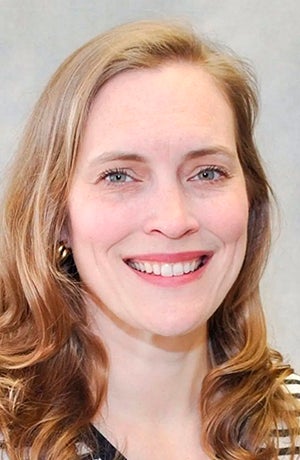Public policy needed to better protect rural health care
Published 8:45 pm Tuesday, May 14, 2024
|
Getting your Trinity Audio player ready...
|
My Point of View by Jennifer Vogt-Erickson
I began this month by driving to Austin’s hospital at 2:30 a.m. in pitch darkness. It was an odyssey courtesy of Mayo. I knew I could have had my compass pointed toward Red Wing instead, and that was not a comfort.
I had waited in Albert Lea’s ER with my mom for six hours. First we waited for results, then for an open bed, then for an ambulance.
We were “lucky” to get a bed in Austin. Before staff confirmed a bed in Austin, the doctor told us they were also checking with Rochester and Red Wing.
Red Wing is 95 miles away. If Mom had been sent there, I would have had to divide myself in half to care for my kids at home and be with her in Red Wing.
What Mayo calls “optimization” of hospital beds is, in practice, putting extra stress on the elderly and squeezing the sandwich generation harder.
Seven years ago, my mother could have been transferred to the med/surg floor in Albert Lea’s hospital instead of enduring a second ambulance ride. But Mayo’s Rochester C-suite had intervened with its “optimization plan,” i.e. consolidation.
We’ve learned that we can’t depend on getting a bed at “our” hospital in Austin either. In fact, a recent article in the Rochester Post Bulletin (“Patients wait longer, transferred farther for care after Mayo scaled back inpatient services in Albert Lea”) crunched the numbers and found that Austin has been on diversion status for med/surg beds about one-fourths of the time between January 2022 and March 2024.
I returned home from Austin that morning in time to get my kids off to school, then turned around and drove back. Bleary-eyed, I walked down the long hospital corridor, passing the nurses’ station with Mayo’s motto, “The needs of the patient come first.”
Anyone who has spun the “Where will I get a hospital bed?” wheel knows it’s not true.
Whenever Mayo calls something “optimization,” you should ask, optimization for whom? It’s not for patients. The needs of Mayo always come first.
The Post Bulletin article told stories of local patients who have felt the brunt of lack of local hospital beds. Unlike my mother, Mike Levisen did have to go to Red Wing in late 2022 for a hospital bed, and his wife Pat and their daughter drove him because an ambulance wasn’t available soon enough. Pat was only able to visit Mike twice while he stayed in Red Wing’s ICU for a week.
Mike and Pat regularly stood on Bridge Avenue for “Save Our Hospital” turnouts on Wednesday afternoons for a year following Mayo’s announcement to close existing inpatient services. We all wanted our patients to avoid the circumstances they ended up going through.
Mayo’s “optimization” of hospital beds is not aligned with community values. It’s aligned with Mayo’s bottom line, which was over $1 billion in the black last year. Sending patients to Red Wing is a choice, not a necessity.
A town of 18,500 needs a proper inpatient hospital for physical health conditions, not “balanced” services (Dr. Bhagra’s word) that makes Albert Lea’s hospital functionally more like a Rural Emergency Hospital (REH), a new federal designation that Mahnomen’s hospital just switched to.
Mahnomen is a community of 1,200 people in northwest Minnesota. If you’ve ever traveled up Highway 59, you know how remote it is.
Mayo gets away with putting Albert Lea in essentially the same boat as much smaller Mahnomen because we had a relationship with Mayo based on trust, not law. And when trust failed, there was no law to protect our patients.
It’s not just Albert Lea patients that are getting a raw deal from Mayo. An Austin man needed a hospital bed in late April, but Austin’s hospital was full.
According to his wife’s public post on social media, Mayo sent him by ambulance to Red Wing, over 80 miles away. Red Wing soon sent him to Rochester for a higher level of care, subjecting him to a second long ambulance ride.
This patient happens to have been Austin’s mayor during the time when Mayo executed its hospital consolidation plan.
Hopefully Tom Stiehm will have a full recovery, and his story drives home the point that we are not just fighting for ourselves when we work for restoration of hospital services in our community. We are fighting for everyone in Mayo’s orbit as Mayo shrinks services outside of its hubs.
My mother had great care during her hospital stay, but without Mayo’s monopoly control, she could have had it in Albert Lea.
We need better public policy that protects rural health care resources. We need to stand up for ourselves, because Mayo won’t. Tell our elected leaders what Mayo’s “optimization” of hospitals and beds actually means for patients.
Jennifer Vogt-Erickson is a member of the Freeborn County DFL Party.


